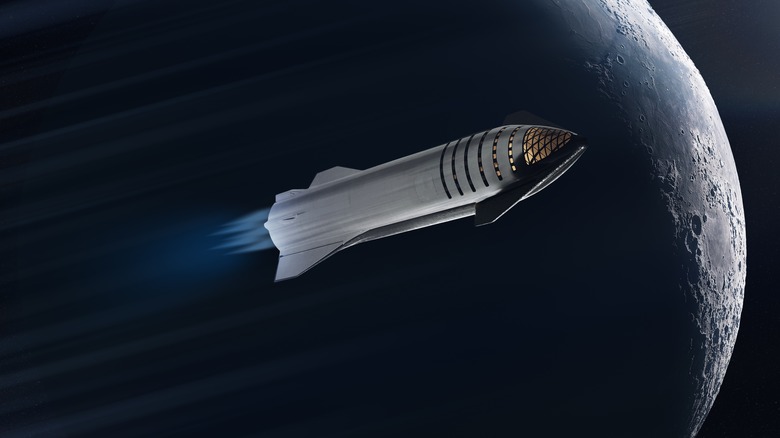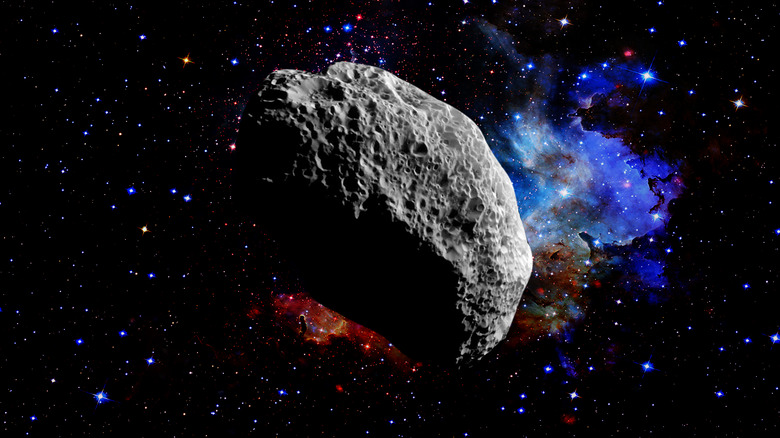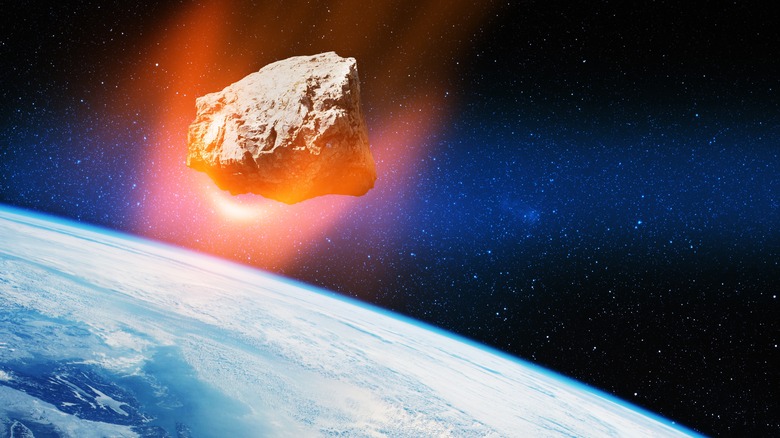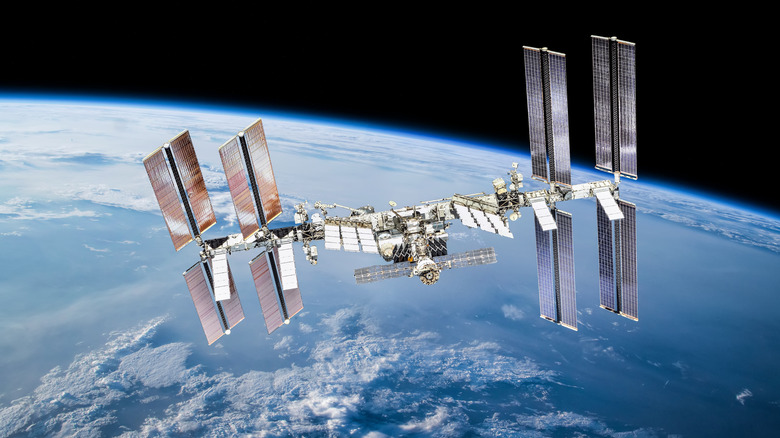Why NASA Is Going To Crash A $330m Spacecraft On Purpose
NASA is going to hit an asteroid with a $330 million spacecraft to test out a theory that may save the Earth one day. The Double Asteroid Redirection Test (DART) probe weighs half a tonne, and scientists estimate it will be traveling at over 14,400 miles per hour at the time of impact. Dart is already en route to its target, an asteroid called Dimorphos that is currently orbiting another asteroid called Didymos, which comes within 6.8 million miles of Earth every two years. Ten days before the impact, another probe called the LICIACube will detach from DART. LICIACube is there to record images of the impact and send the results back to Earth. Unsurprisingly, DART is not expected to survive its mission. NASA claims the asteroid being targeted is not a "threat to Earth."
The probe was launched by NASA and Elon Musk's company SpaceX in November last year. Johns Hopkins Applied Physics Laboratory built DART, the attached LICIACube was made in Italy, and the European Space Agency's Hera investigations and science teams are also playing a part in the project. While acknowledging the collaborative effort, the associate administrator for the Science Mission Directorate at NASA Headquarters, Thomas Zurbuchen, has described DART as a "mission of unity." The level of international collaboration involved with DART is quite fitting when you consider what a successful mission could mean for all life on earth.
What NASA hopes to learn
It's formed the basis of major sci-fi thriller plots for years. An asteroid is on its way to Earth, we're all going to die, and the only thing that can save us is some brilliant scientists or Bruce Willis with a nuke or something. While DART may cost more than a retired action star's standard movie fee, it is also far more expendable. If the results are what scientists expect, it may also be the best money Earth has ever spent.
It is hoped that DART will affect the orbit of the 163-meter wide asteroid it is targeting — pushing it closer to Didymos, the larger astronomical body it is currently orbiting. Dimorphos currently takes around 12 hours to orbit Didymos, and NASA's scientists hope the impact will nudge the smaller asteroid close enough to shorten that orbit by several minutes. NASA believes we have the technology to target, hit, and move asteroids. DART is a test of that capability and will prove humans can hit asteroids in the first place, as well as provide real data on the effects of those impacts. NASA says that Dimorphos orbits Didymos far slower than its parent asteroid orbits the sun. As a result, the organization believes it can use telescopes to get an accurate measurement of the impact's effects. The results will then "validate and improve scientific computer models critical to predicting the effectiveness of the kinetic impact as a reliable method for asteroid deflection."
When coupled with technology that could spot potential hazards decades before they could threaten our planet, DART could be a game changer. Even a small shift in course far enough away could turn a direct asteroid hit on Earth into a wide miss.
Could an asteroid actually hit earth?
Yes. It has happened thousands of times and will almost certainly happen again. The impact could also have a devastating effect on all things living on Earth at that time. One of the more famous asteroid impacts is widely believed to have brought about the extinction of the dinosaurs. According to the Lunar and Planetary Institute the Chicxulub Impact, which took place in what is now the gulf of Mexico, resulted in a 100 million megaton blast and generated a core of 10,000-degree superheated plasma. We are all aware of the devastation a nuclear war would cause. The largest nuclear weapon ever tested was the 50-megaton Tsar Bomba. The Chicxulub Impact was the equivalent of two million Tsar Bombas hitting the same spot. An impact with a planet the size of Mars may have been responsible for smashing what would eventually become the moon out of the earth itself. Though as the Natural History Museum explains, that enormous impact was in the early days of the solar system before our planet had cleared its orbit of other celestial bodies.
However, we aren't in any immediate danger, and if DART is as successful as NASA hopes, we may never be. Lindley Johnson, planetary defense officer at NASA Headquarters, says: "We have not yet found any significant asteroid impact threat to Earth, but we continue to search for that sizable population we know is still to be found. Our goal is to find any possible impact, years to decades in advance, so it can be deflected with a capability like DART that is possible with the technology we currently have."
In space, $330 million isn't that much
To most people, $330 million is an almost unfathomable amount of money. But as far as space spending goes, $330 million is basically pocket change. NASA has apparently spent $420 million, $90 million more than the DART probe's price, developing its next generation of space suits. It's hoped the xEMU suits will eventually be worn by the next humans to set foot on the moon. The space suits themselves cost half a billion dollars each.
Artemis, the ambitious NASA mission that will take humanity back to the moon for the first time in 50 years, is expected to have cost a total of $93 billion by 2025. Although putting the first woman and person of color on the moon could be seen as a couple of notable targets, those aren't Artemis' only goals. The project itself is meant to give humanity a platform from which it can conduct manned missions deeper into space. After the Artemis project complete's its goals, a space station similar to the ISS will be orbiting the moon. This station is designed to be a refueling and resupply point for future missions to Mars and beyond.
Actually living in space is on another level entirely. A ticket to travel to your place in space could cost close to half a billion dollars, a night on the International Space Station will set you back $35,000, and getting set up in a small apartment on the moon with an internet connection could cost as much as $58 billion.



